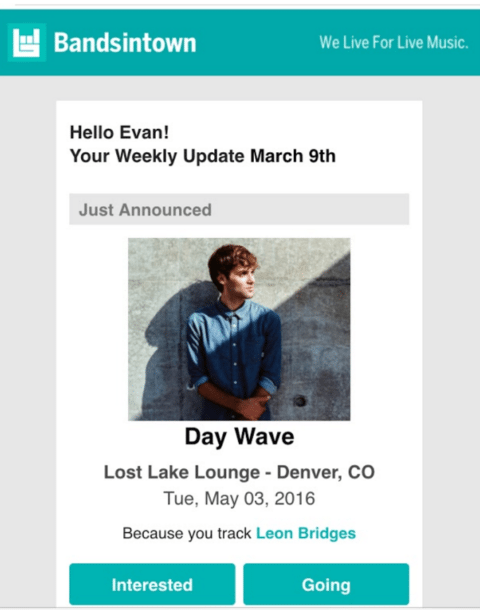
The email segment of one: otherwise known as hyper-personalization (or an email marketer's holy grail). You reach it when you know so much about a recipient–what motivates them, what schedules they keep, why/when they spend–that every single communication you send is custom tailored to a particular individual.
Although aspirational, marketing–and especially email marketing–has been evolving towards the segment of one for many years. Personalization is everywhere, and we as marketers have to understand that tailoring user experience based on previous actions and preferences has increasingly become the new normal.
But how can you continue to speak to each email recipient in meaningful ways? Consider the following ideas that can help you act upon your audience's past behaviors, intent, and unique traits so that your email will speak to them more personally. When you build a greater connection with your recipients, you’ll likely experience more loyalty and increased ROI.
Producing valuable content is, and should always be, goal number one when planning out an email program. But also consider
when you are sending email content out. If you keep track of all customer behavior on the individual level, you can start to do this.

For example,
Bandsintown is a popular website and app that lets users track their favorite music artists and purchase tickets when they come to areas designated by the user. While Bandsintown communicates with customers via push and SMS, they’ve embraced email as their core communication channel–sending an impressive 50 million emails each month.
Users sign up and select certain artists that they are interested in tracking. A couple of months before a concert is coming to a recipient’s area, Bandsintown sends out an email notifying them of the show with ticket purchase options.
Not only does Bandsintown send alerts for a selected band, they also provide suggestions of shows that feature
similar artists for users. This strategy provides each user with different emails at the right time based on their preferences or likelihood to purchase tickets.
In our
2018 Email Benchmark Report, we found that mobile usage for the entertainment/events industry increased from 61% to 67%. Knowing this sort of insight provides an opportunity to further
personalize emails to your base audience with responsive design, less copy, and bolder CTAs.
Providing contextual email content can be applied no matter what industry you work in. Retail or
ecommerce companies might consider tracking variables such as weather and if, for example, a big storm or heat wave was coming to a certain area they might send a
promotional email with a discount on snow shovels, or air conditioning units.
Looking for more ideas or inspiration on email marketing ideas? Check out
104 Email Marketing Myths, Experiments, And Inspiration.
If you work on or market a product that includes an app, consider that it’s far less expensive to collect an email than to convince somebody to download an app. So if you have the resources, why not build the app in the email?
This tactic has turned from a far-fetched idea for those with access to the most resources to something that small teams can create. CSS3 has provided clever designers the ability to build items such as shopping carts in the email client using the Tab feature of CSS.
As a result, these emails behave like micro apps and turn the mundane task of scrolling into clicking, viewing, and engaging with the brand. So instead of a marketer trying to figure out how to design and plan an email that a user will be more likely to interact with, the recipient really drives that behavior.
See how eBay accomplishes this in its emails.
This is rather significant development given that previous attempts to make email interactive used JavaScript for inputting information. Talk to you developer and designers to see if you can start incorporating this into your own program.
Even if you can’t get as sophisticated as eBay, you can make incremental steps that can make a big difference. For example, you might start playing around with animation or gifs in one email campaign and test it against a control group. And you can always expand your segmentation strategy into variables such as buying patterns and industry.
For more on how email experts from across multiple industries optimize their programs check out
The Experts Guide To Email Marketing.

 The email segment of one: otherwise known as hyper-personalization (or an email marketer's holy grail). You reach it when you know so much about a recipient–what motivates them, what schedules they keep, why/when they spend–that every single communication you send is custom tailored to a particular individual.
The email segment of one: otherwise known as hyper-personalization (or an email marketer's holy grail). You reach it when you know so much about a recipient–what motivates them, what schedules they keep, why/when they spend–that every single communication you send is custom tailored to a particular individual.

